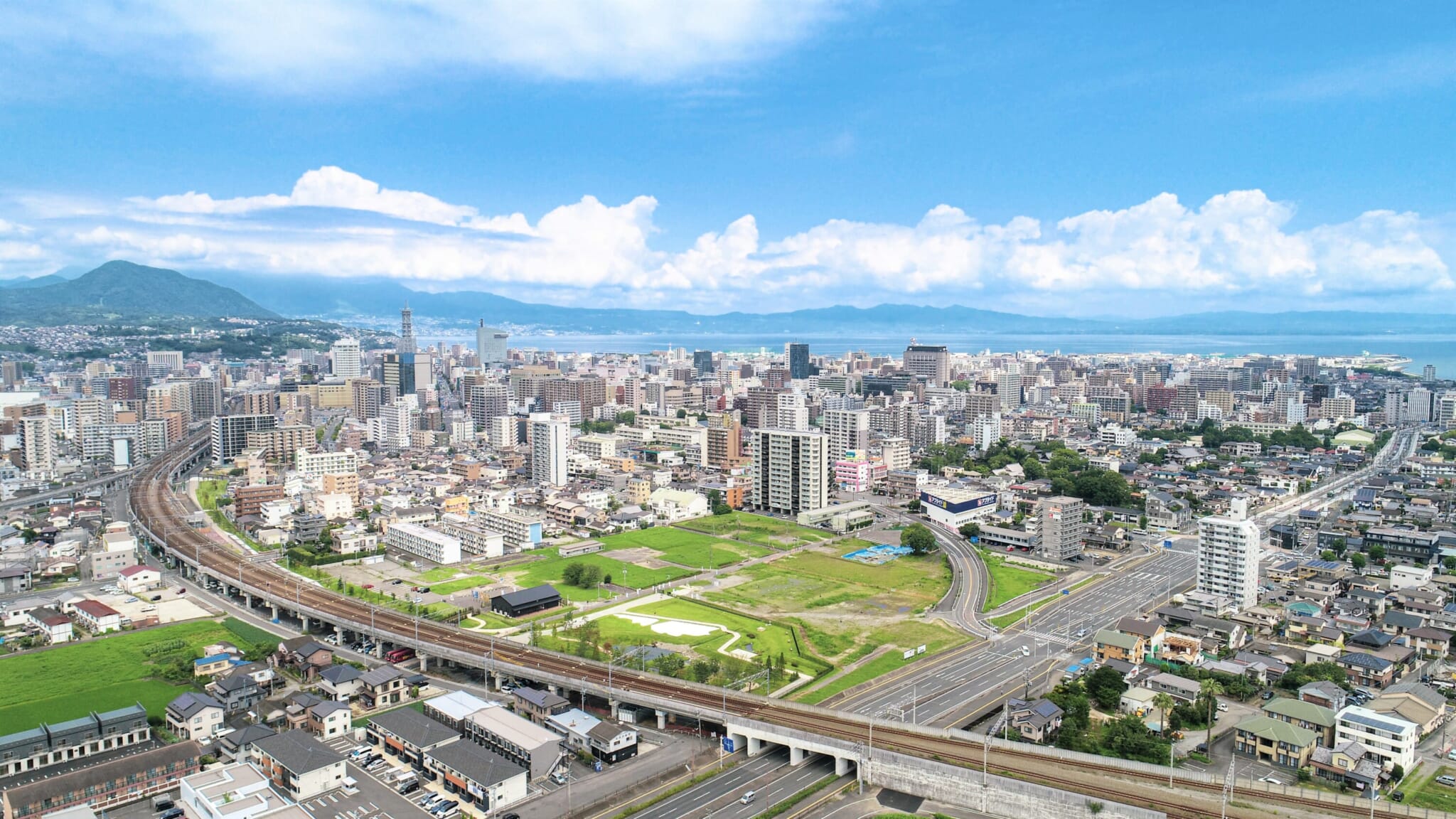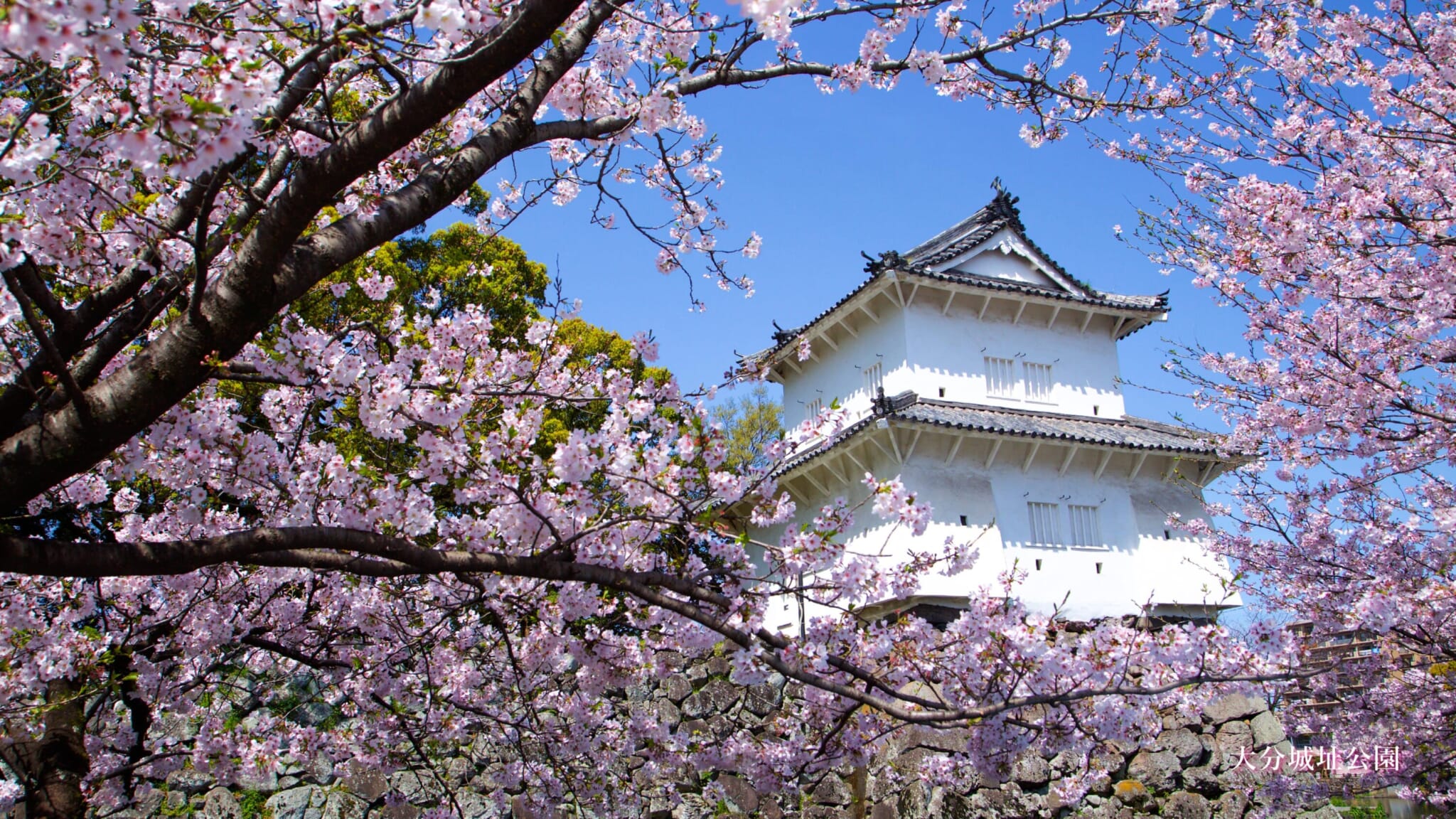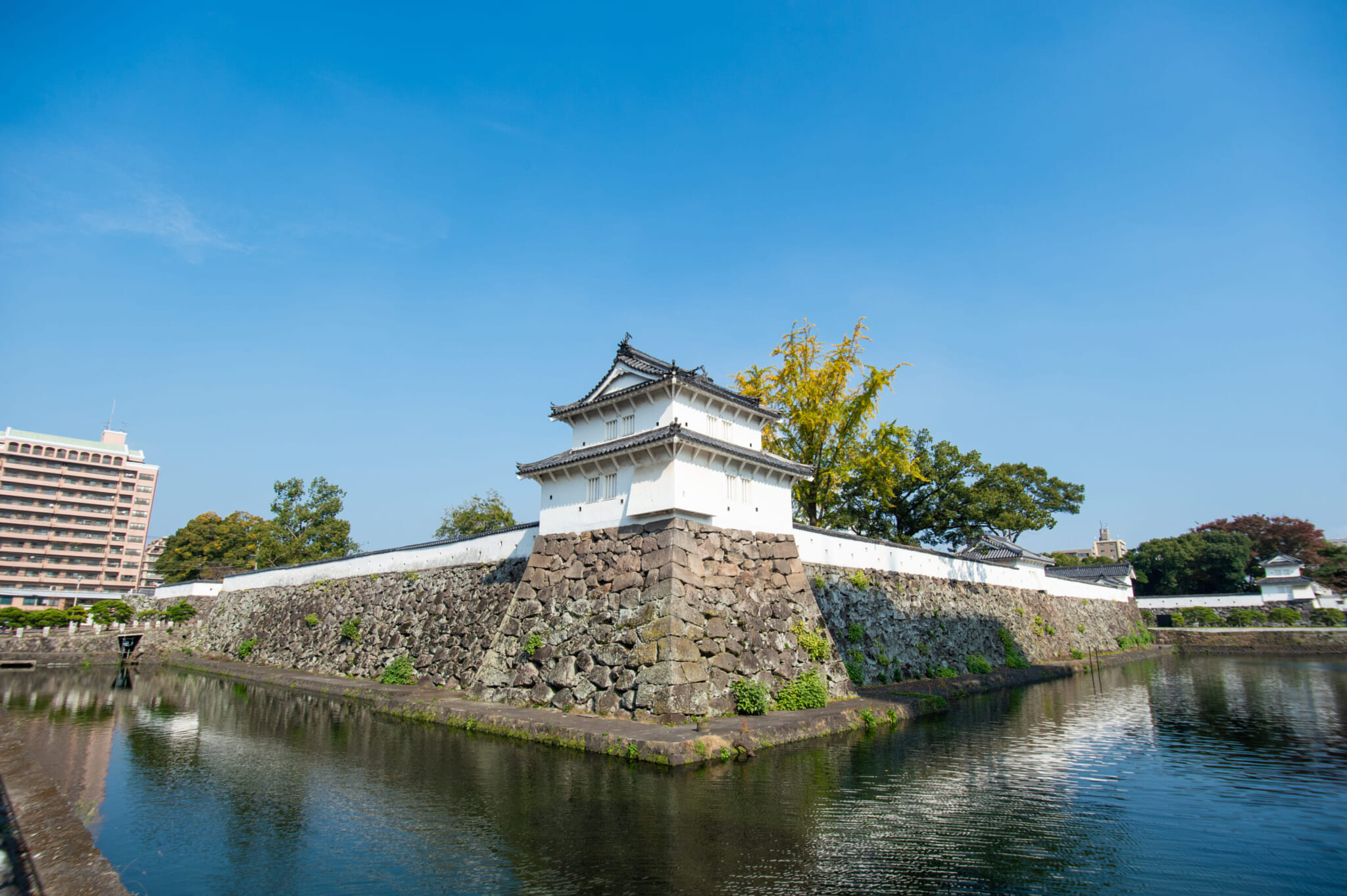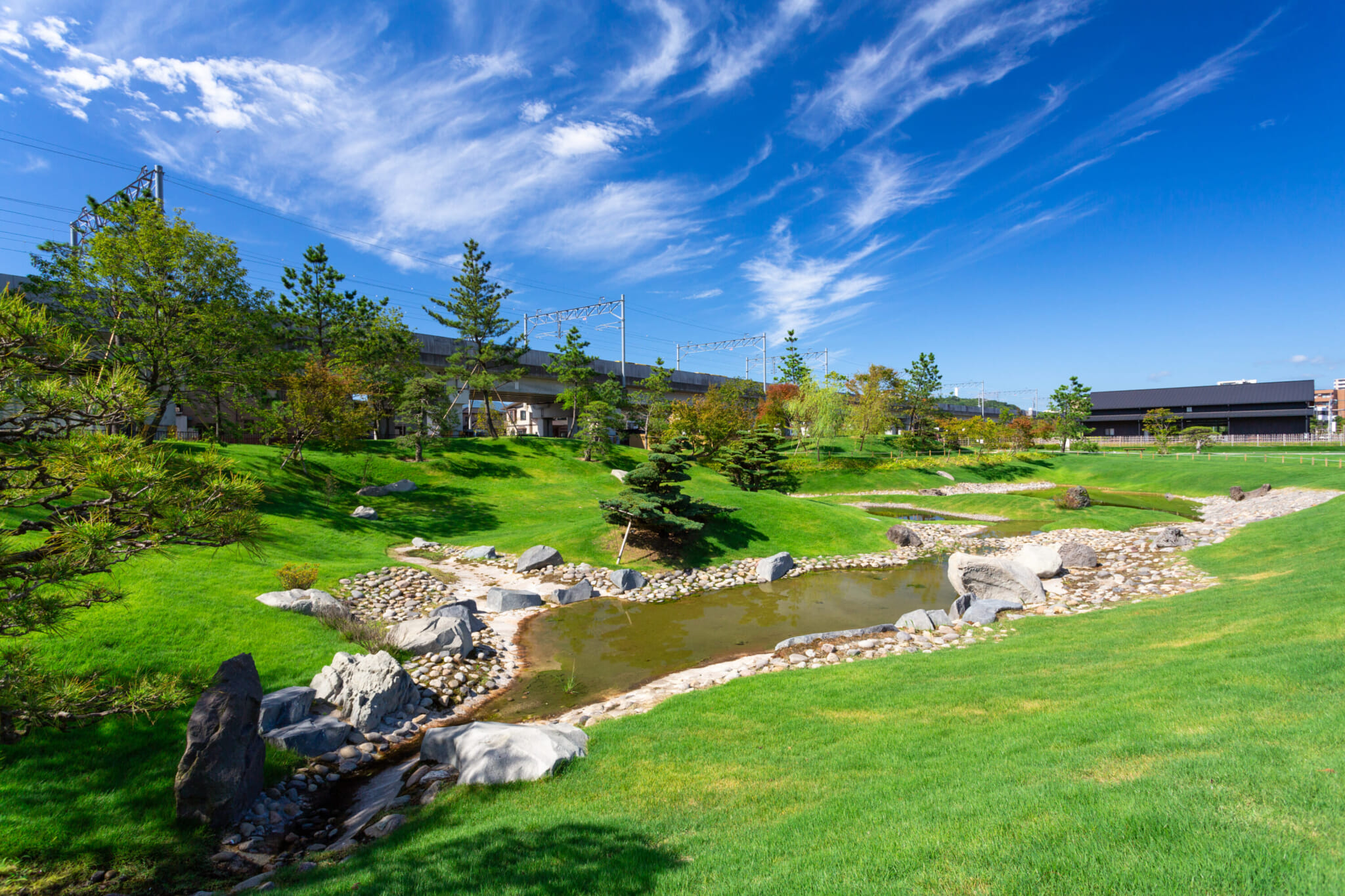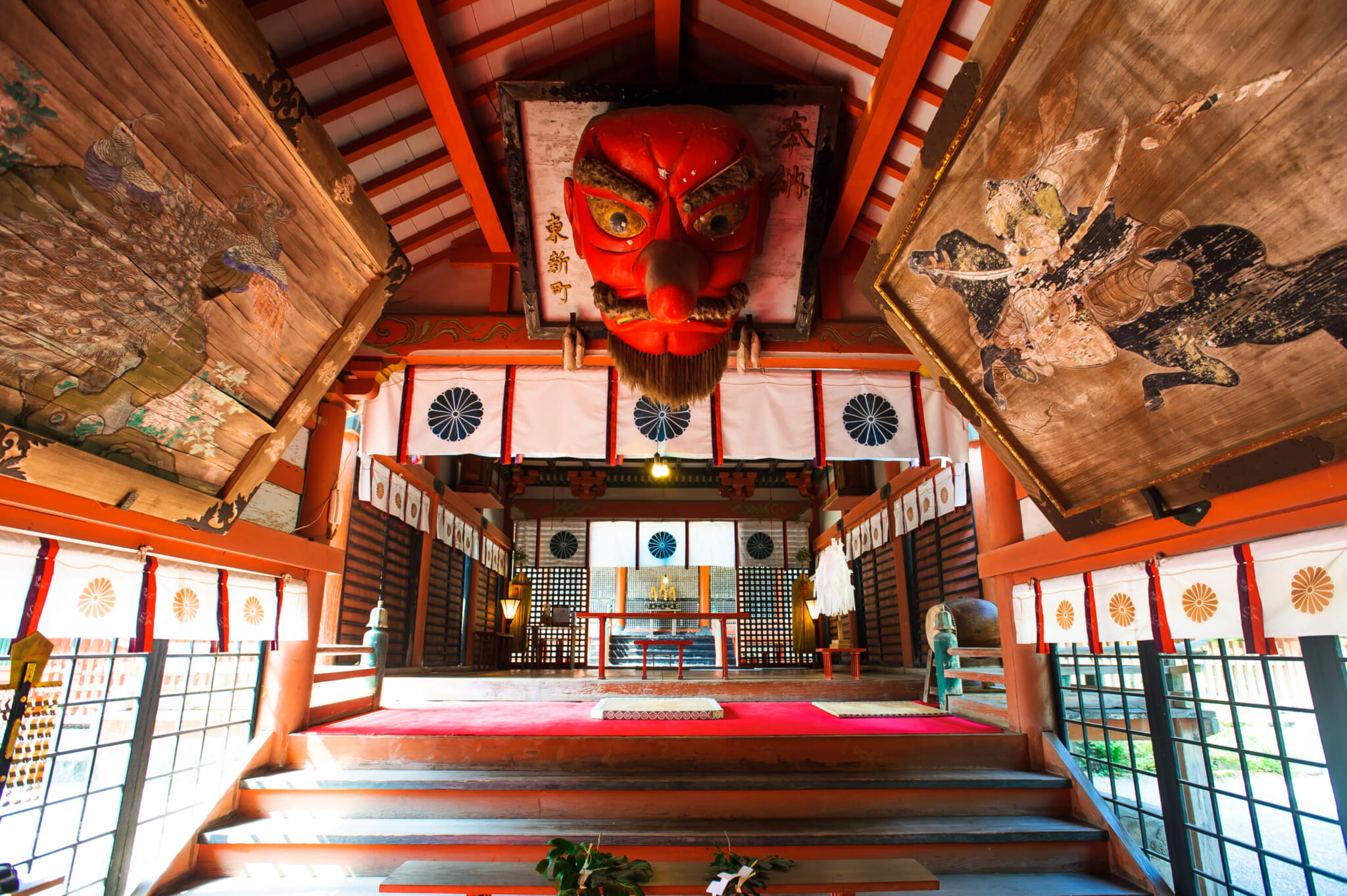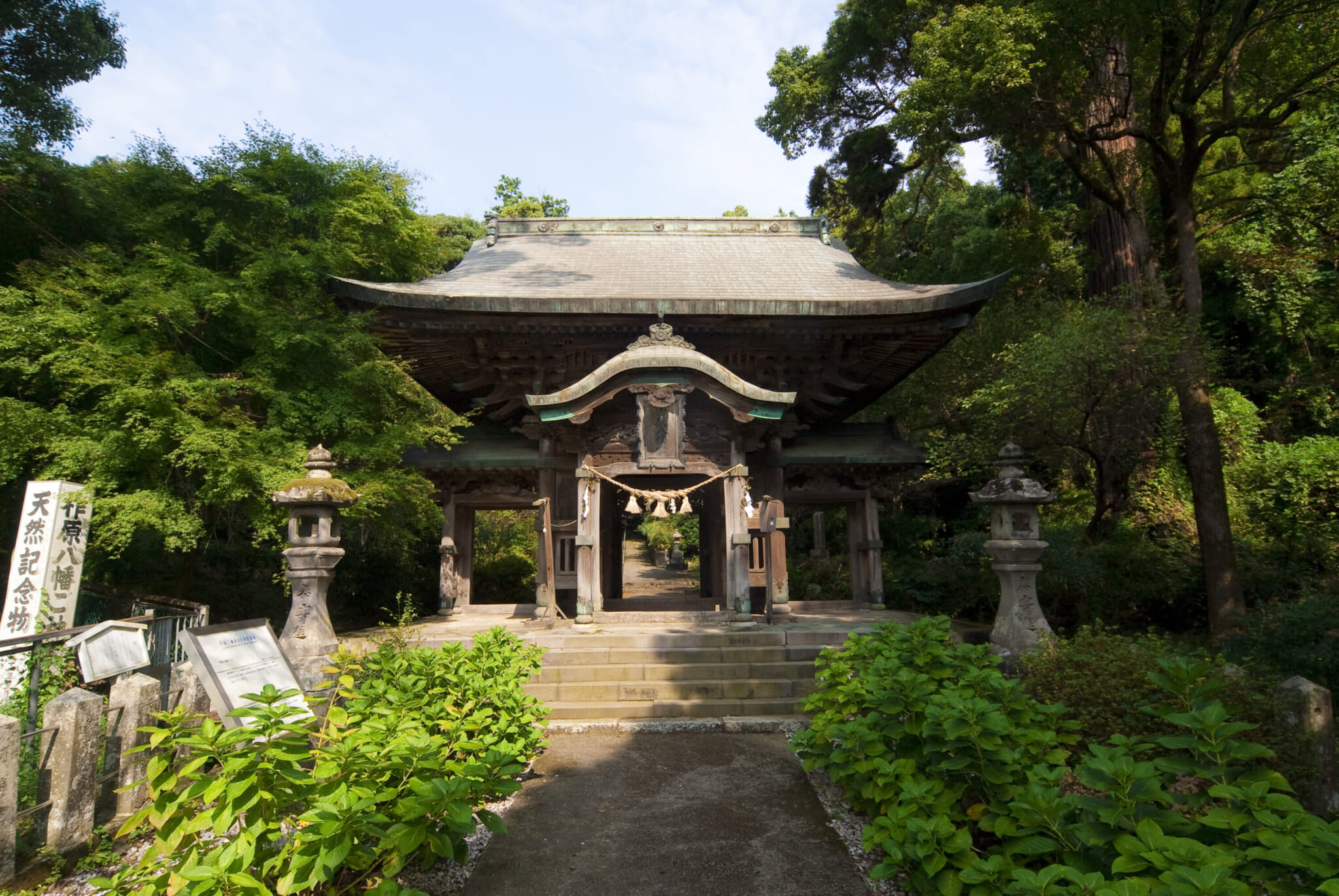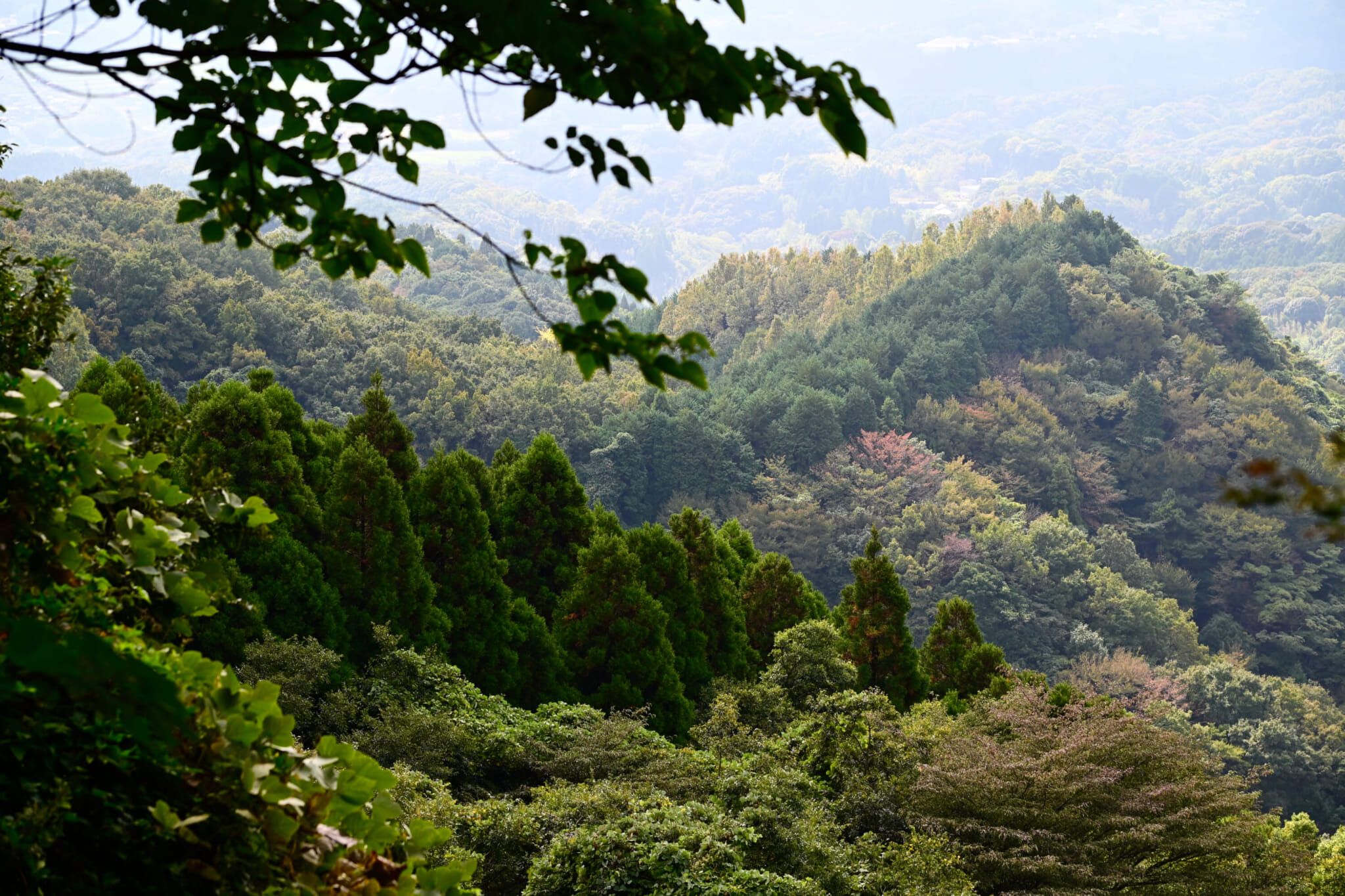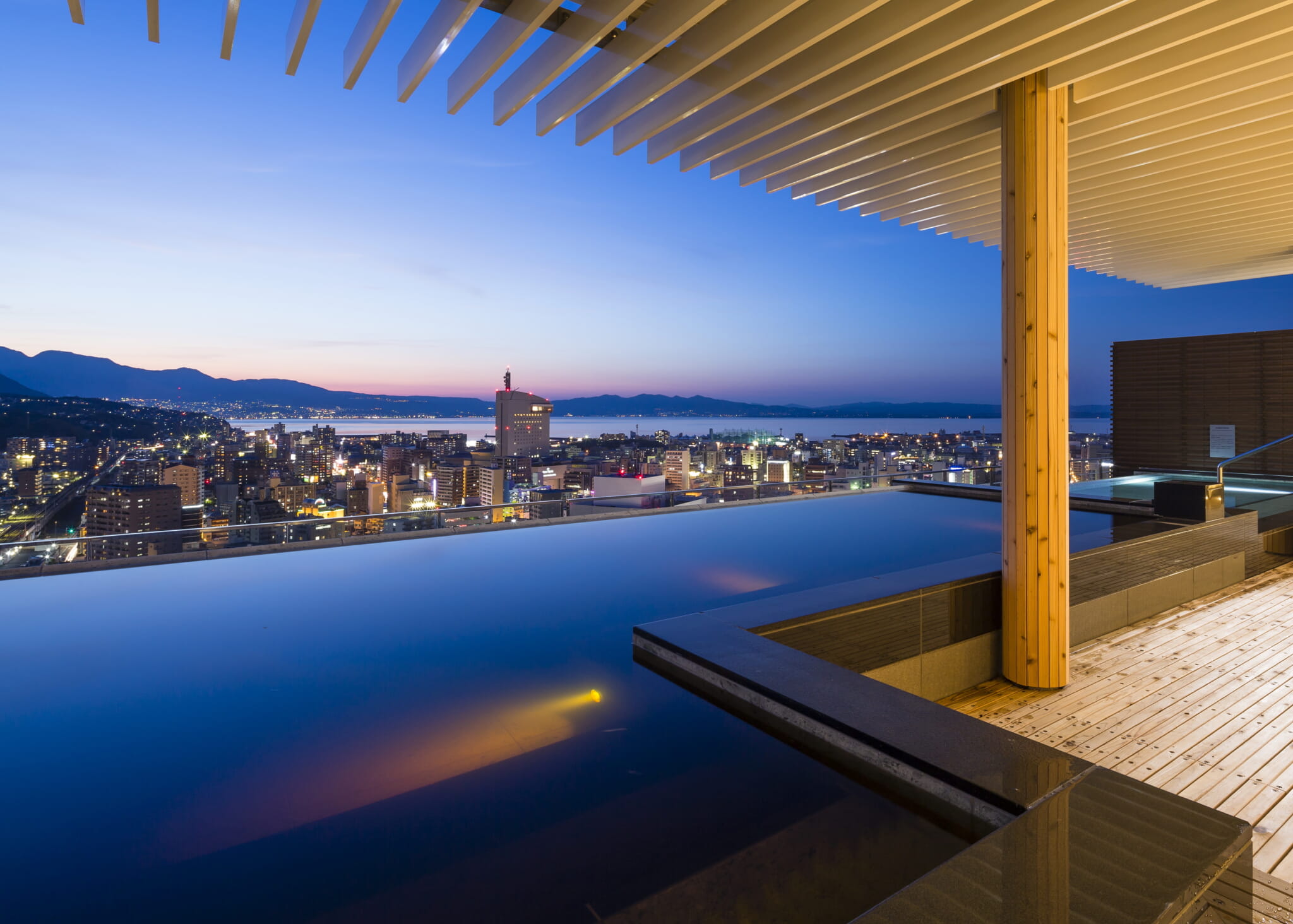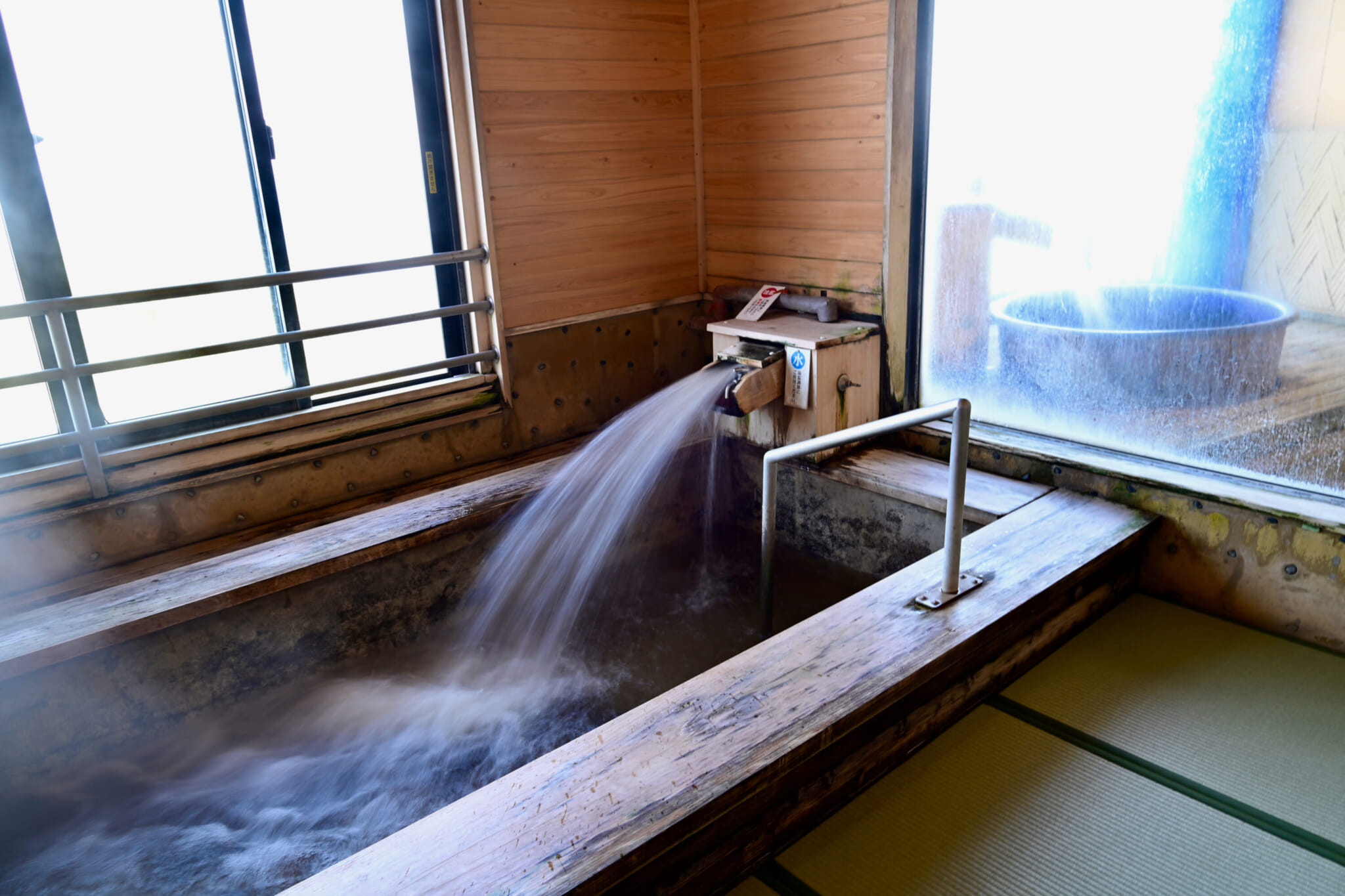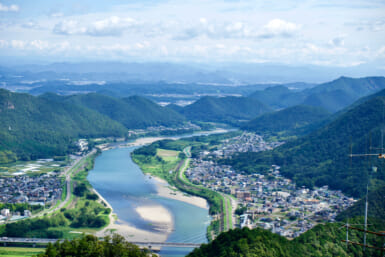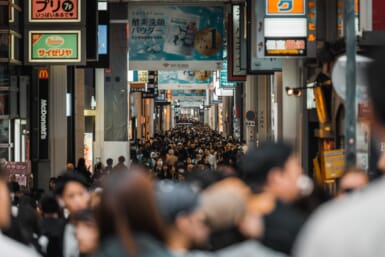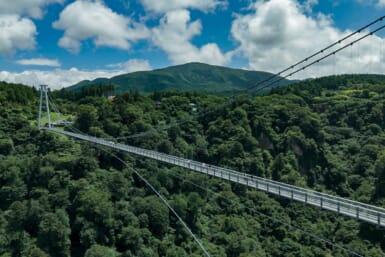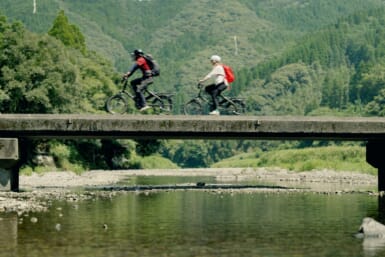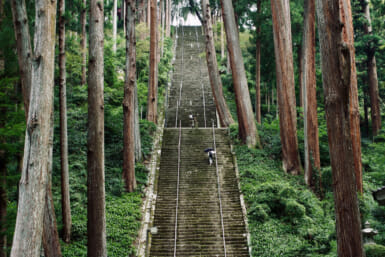Oita city, on the southern coast of Kyushu’s Beppu Bay, offers a captivating blend of history, culture and natural beauty. Boasting a rich samurai legacy, the city brims with notable sightseeing spots where visitors can immerse themselves in Oita’s illustrious past. Complimenting the city’s heritage are its traditions of spirituality and healing in nature. Oita city’s sacred sites and natural wonders provide visitors with myriad opportunities for mindful contemplation and rejuvenation, whether they choose to wander holy grounds, bathe in the city’s hot springs or stroll its verdant forests.
A vibrant cultural landscape awaits you — read on for more of what you’ll find.
Living History: The Otomo Family Residence and Funai Castle Ruins
Standing tall in the Oita Station plaza is an unexpected statue of a Japanese man wearing 16th-century European attire. This is Otomo Sorin, head of the powerful Otomo family during its most prosperous years, during which it ruled much of northern Kyushu from its base in Funai (the modern-day Oita city center). Though Japan is known for its roughly 200-year period of self-isolation, spanning the mid-17th to the mid-19th centuries, the years before this policy took effect were filled with international exchange, particularly in Kyushu, and the Otomo family was deeply involved.
A historical hero of Oita Prefecture, Sorin welcomed Jesuit missionary Francis Xavier to Bungo Province (modern-day Oita Prefecture) in 1551. Following their meeting, Sorin was able to engage in trade with Europe while Xavier was given permission to pursue missionary activities. Sorin’s international trade — which extended to China and Southeast Asia — brought the Otomo family considerable economic might, leading the way for Sorin to hold the military governorship of Kyushu’s six northern provinces.
Visitors can experience first-hand the legacy of the Otomo family at sites across Oita city, such as the ruins of their residence. Both educational and inspirational, the ruins are also home to the Nanban Bungo Koryukan (Otomo Ruins Discovery Center), an interactive museum with unearthed artifacts, replicas of traditional teahouses and even period costumes to try on. Step outside to explore the Otomo Clan Residence Ruins Garden, featuring one of the largest ponds found at a daimyo residence of the period.
After touring sites connected to the Otomo family, head to Oita Joushi Park to explore the Funai Castle Ruins. Just two turrets, a moat, and stone and earthen walls remain of its original structures, yet Funai Castle, completed in 1602, is still considered one of Japan’s top 100 castles, and its remnants offer a glimpse into the complicated world of the early Edo period. For particularly picturesque scenery, time your visit to coincide with spring’s cherry blossoms or fall’s fiery foliage.
Spiritual Sites: Yusuhara Hachimangu Shrine and Sasamuta Shrine
To fully appreciate Oita city, one must engage with its deep spirituality. A good place to start is Yusuhara Hachimangu Shrine. Founded in 836, it’s one of the oldest and most historically significant shrines in Oita, and for centuries, it was supported by the Otomo family. Of particular note are the shrine’s massive camphor tree — 30 meters tall, 19 meters in circumference and approximately 3,000 years old — and its southern gate. Known as the Higurashimon, the gate features 24 panels of ornate relief carvings, including images of dragons, flowers and birds.
For another spiritual escape nestled amid a serene forest, make your way to Sasamuta Shrine. The shrine is beloved for its beauty; in spring, an immense, 450-year-old wisteria vine embellishes the grounds with its purple blossoms while the Mannen Bridge, an elegant stone structure, arches over a river at the shrine entrance.
Nature in Oita City: Onsen, Hiking Trails and Forest Bathing
Blessed with the sea, forested mountains and mineral-rich, silky-smooth hot springs, Oita city is an idyllic destination for a healing getaway. Enjoyed by its residents for centuries, the city’s light-brown spring water teems with hydrating minerals that give the water a slippery texture. Many hotels have their own onsen, and hot spring facilities geared toward day-trippers are plentiful.
For breathtaking views of Beppu Bay, look no further than Tenkai no Yu. The facility also offers seven private baths, allowing for a comfortable soak for families, apprehensive guests or those with tattoos.
The luxurious City Spa Tenku, conveniently located in the Oita Station-adjacent JR Oita City building, has a spacious open-air bath with a view of Oita city from 80 meters above ground, as well as a carbonated hot spring bath, Finnish and steam saunas and an aroma salt spa. Meanwhile, Oita Onsen Story Mitsugawa no Yu, which features kakenagashi (free-flowing) springs pumped from 700 meters underground, boasts a business hotel and restaurant for a convenient and restorative stay.
Oita city’s residents are connoisseurs of healing in nature. Long before the term shinrin-yoku (forest bathing) was coined in 1982, locals were already heading into the woods to feel refreshed and energized. With the emergence of forest therapy roads, it’s easy to join them.
For a moderate hike of about three hours (round trip), set off for Mount Takasaki Therapy Road. Contemplate the remains of Takasaki Castle, once used by the Otomo family, from near the summit, and behold spectacular views of Beppu Bay. Keep your eyes peeled for Japanese macaques as you walk, but failing an encounter, you can stop by the Takasakiyama Monkey Park to see plenty of friendly primates.
If a gentle stroll is more your style, give the centrally located Ueno Forest Therapy Road a try. The Oita City Art Museum, which houses over 3,300 works by modern and contemporary artists, is located along the path, providing walkers with the option of finding inner peace through art as well as through nature.
More Info
Follow Oita city’s Instagram to keep abreast of events and seasonal highlights. For more information on what the city has to offer, visit the Oita city tourism website and the official website of Oita city.

